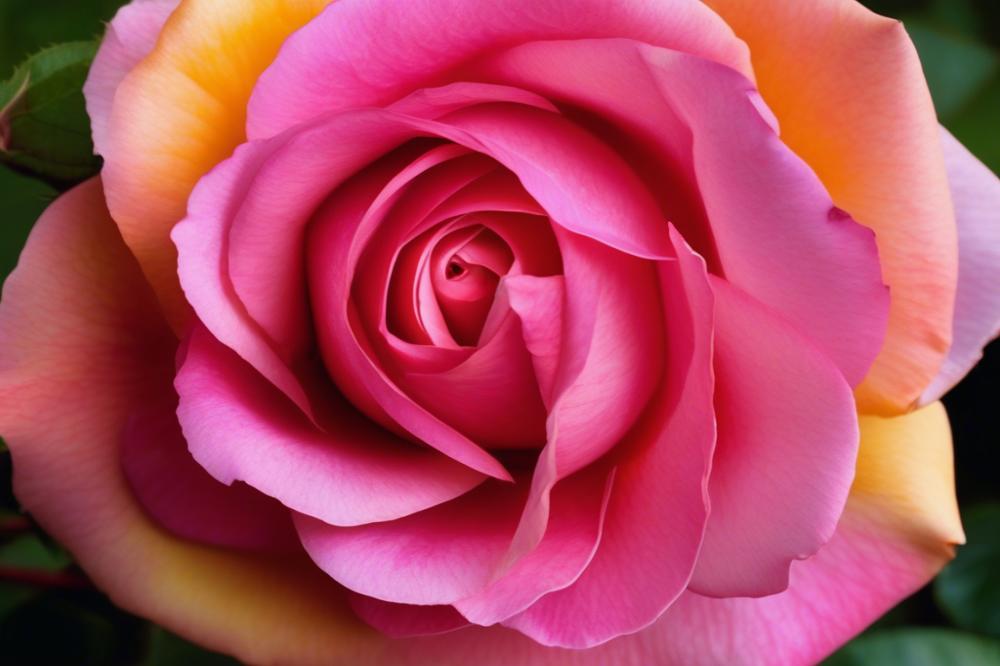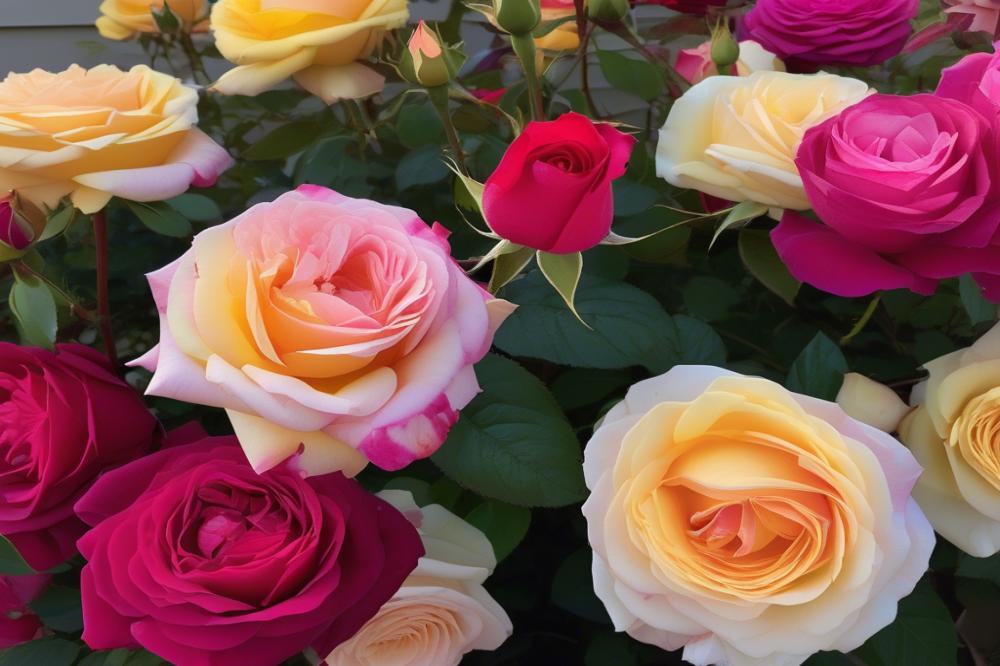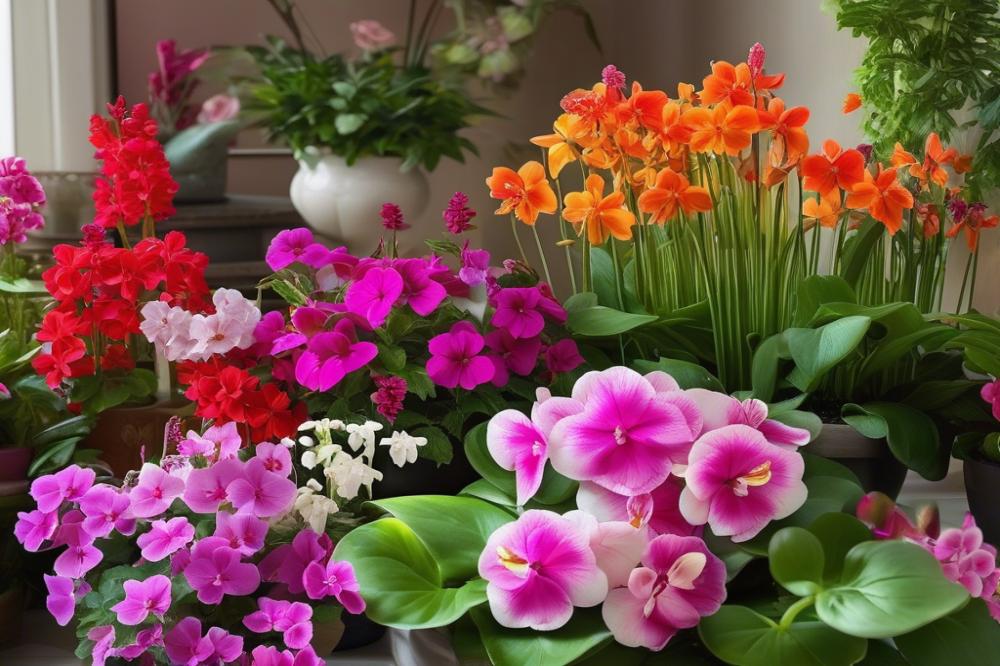Exploring the Charm of Heirloom Roses
Heirloom Roses carry a deep historical significance that captivates gardeners and flower lovers alike. These blooms date back to earlier times, often cultivated for generations. They tell stories of the past through their rich colors and delightful fragrances. Unlike many modern hybrids, heirloom varieties often preserve unique traits that evoke nostalgia. Each blossom serves as a reminder of the beauty that can emerge from a sustainable gardening approach.
Preserving classic beauty in gardening is not just a trend; it reflects a commitment to maintaining the diversity of plant life. Many gardeners find joy in growing plants that have withstood the test of time. They offer an opportunity to connect with history and create a floral legacy in one’s own backyard. Growing heirlooms can also support a healthy ecosystem. Organic gardening practices complement these efforts, keeping the environment in mind while cultivating these timeless treasures.
The charm of heirloom varieties lies in their diverse characteristics. Fragrance, color, and shape vary widely, allowing gardeners to select blooms that resonate with their personal tastes. Successful Rose Care involves understanding the specific needs of these plants, including planting roses in suitable locations and proper pruning techniques. With the right gardening tips, even novice gardeners can flourish. Educating oneself about rose diseases can also save time and trouble in the future.
Ultimately, heirloom roses provide a delightful way to beautify gardens while preserving history. They invite anyone interested in flowers to join a legacy that values culture and nature. Delighting in these blooms can inspire sustainable gardening habits. Connect with the past and nurture the future through gardening choices that honor classic beauty.
Understanding Heirloom Roses

Heirloom roses are a delightful choice for any garden. They have a distinct charm that complements their classic beauty. Defined as varieties that have stood the test of time, these roses often originate from before the 20th century. Their rich historical background adds depth to any garden, making them special to enthusiasts and collectors alike.
These roses come with unique characteristics. Many heirloom varieties display a broader range of colors and shapes than modern roses. Often, you will notice that their petals have a softer texture, which can be particularly appealing. Unlike many contemporary hybrids, heirlooms tend to possess a powerful fragrance. This sweet scent is a treat for anyone fond of gardening. Moreover, their resilience to disease can make them easier to maintain.
In contrast, modern rose varieties often prioritize bloom size and color over hardiness and scent. While they may have stunning appearances, many lack the robust fragrance that heirlooms are known for. Additionally, these newer hybrids can require more chemical treatments to combat rose diseases, which might discourage organic gardening practices. Heirloom roses, on the other hand, are often hardier and better suited for sustainable gardening.
Growing heirloom roses also provides various benefits. These plants can thrive in a range of climates, making them a suitable selection for different regions. For those looking to embrace heirloom gardening, the approach usually aligns with organic principles. gardening tips specific to these roses include regular watering and mulching to retain moisture.
Pruning roses should be done carefully, usually in late winter or early spring. This helps maintain the plant’s shape and promotes healthier blooms. Careful attention can help prevent common rose diseases that affect both modern and heirloom types. By focusing on heirlooms, you can cultivate fragrant roses that add character to your outdoor space.
Overall, selecting heirloom varieties can lead to a more fulfilling gardening experience. Their combination of historical significance, robust nature, and enchanting fragrance make them an excellent choice for any gardener seeking to preserve beauty in their landscape. Consider planting roses that carry stories of the past while thriving in today’s gardens.
Selecting Heirloom Varieties

Popular heirloom rose varieties to consider
Several classic beauties stand out among heirloom roses. Consider the ‘David Austin’ varieties for their stunning blooms and captivating fragrances. The ‘Old Blush’ rose is a favorite due to its lovely soft pink petals and historical significance. Another wonderful option is the ‘Peace’ rose, known for its colorful blossoms that change with the seasons. For those seeking fragrance, the ‘Mrs. Dudley Cross’ offers an enchanting scent alongside its charming blooms. Take time to explore these varieties. Each possesses a rich heritage and contributes to heirloom gardening.
Factors to consider when choosing varieties
When it comes to picking roses, think about your local climate. Certain heirloom varieties thrive better in specific conditions. Evaluating your garden’s soil also plays a crucial role. Some roses prefer well-drained sandy soils, while others flourish in richer earth. Consider the amount of sunlight your garden receives. Most roses love sunshine, but some can tolerate partial shade. How much space do you have? Large varieties need room to spread, while compact ones fit well in smaller gardens. Finally, do you want to grow roses primarily for their beauty, or are fragrant roses your main interest? Asking yourself these questions can guide you toward the right heirloom variety.
Tips for sourcing heirloom roses from reputable nurseries
Finding the perfect heirloom roses should be a priority for every gardener. Begin by searching for local nurseries that specialize in organic gardening. Such places often carry a diverse selection of heirloom varieties. If local options are limited, consider online retailers known for their quality. Look for reviews to gauge the experiences of previous buyers. Visiting garden shows can also be fruitful; many vendors showcase unique selections, allowing you to see the roses before purchasing. While at the nursery, ask questions about care, pruning roses, and potential rose diseases. Knowledgeable staff can provide valuable gardening tips. Remember, the better the source, the healthier your roses will be.
Planting Roses

Ideal Location and Soil Conditions for Planting Heirloom Roses
Finding the right spot for your roses is essential. They thrive in full sunlight, so choose an area that receives at least six hours of direct sunlight daily. Good air circulation is also vital to prevent rose diseases. Test your soil. It should be well-draining with a slightly acidic pH of 6.0 to 6.8. Enrich the soil with organic matter like compost. This not only boosts nutrient levels but encourages healthy root growth. Sandy loam soil is often best for these heirloom varieties.
Step-by-Step Guide to Planting Roses
Begin by digging a hole that is twice as wide as the root ball of your rose. Depth should match the height of the root system. This allows ample space for root development. Place your rose into the hole gently, making sure it stands upright. Fill the hole with a mix of native soil and compost to help establish the plant. Water deeply and allow excess moisture to drain away. Apply mulch around the base. This helps control weeds and retains soil moisture.
Importance of Spacing and Companion Planting for Healthy Growth
Spacing is not just about aesthetics; it’s crucial for the health of your plants. Allow at least three feet between each rose bush. This distance promotes airflow, reducing the risk of diseases. Consider companion planting as well. Pairing fragrant roses with herbs like lavender can deter pests naturally. Other beneficial partners include marigolds, which can keep harmful insects away. Practicing sustainable gardening techniques creates a thriving ecosystem in your garden. Following these gardening tips will support the vibrant growth and classic beauty of your roses for years to come.
Organic Gardening Practices

Organic gardening practices play a vital role in cultivating beautiful roses. The primary principle is to work with nature instead of battling against it. This means utilizing methods that promote soil health, biodiversity, and sustainability. When planting roses, it’s crucial to enrich the soil with natural materials. Compost is a great option to enhance fertility. Additionally, mulching reduces weed growth while helping retain moisture in the soil.
Choosing organic methods for growing heirloom varieties brings several benefits. First, plants grown organically tend to be healthier and more resilient. This includes fragrant roses that attract pollinators, enhancing your garden’s ecosystem. Less reliance on synthetic chemicals also means the environment benefits. Protecting beneficial insects and maintaining soil life leads to a more balanced garden. By adopting organic practices, you preserve classic beauty without harming the planet.
Recommended Organic Fertilizers and Pest Control Options
Natural fertilizers are essential for growing roses organically. Look for versatile options such as fish emulsion or seaweed extract. These provide vital nutrients while promoting strong growth. For added benefits, consider using worm castings or compost teas. These options not only feed the plants but also improve soil structure. They encourage healthy root systems and vibrant blooms.
Pest control in organic gardening requires creativity and knowledge. Instead of reaching for chemical sprays, think about companion planting. Some herbs and flowers deter harmful insects naturally. Spraying a mixture of water and mild soap can help eliminate aphids and other pests. Regularly checking for signs of rose diseases is also vital. Early detection can prevent more significant problems later on.
Pruning roses is another critical aspect of heirloom gardening. This helps remove dead or diseased wood, leading to healthier plants. Proper cuts allow better air circulation, which can prevent fungal issues. Remember to clean your pruning tools to avoid spreading diseases. Focus on cutting back aggressively in spring to promote lush growth.
growing roses organically lets you appreciate their beauty while caring for the ecosystem. Embrace these gardening tips to create a stunning, sustainable landscape. With patience and effort, your heirloom roses will flourish in a healthy, thriving environment.
Caring for Heirloom Roses
To maintain the classic beauty of heirloom roses, you need to adopt specific gardening tips. These tips will help you nurture your plants and celebrate their heirloom varieties. Start by focusing on your watering and mulching practices. Watering regularly is crucial, especially during dry spells. However, always try to water deeply rather than lightly on the surface. This method promotes healthy root growth.
Well-mulched soil holds moisture longer and suppresses weeds. Organic gardening methods suggest using straw, wood chips, or shredded leaves as mulch. Each of these options allows water and nutrients to seep into the soil while providing a protective layer. Sprinkle about three inches of mulch around your roses, but be mindful not to pile it against the stems. This can prevent airflow and lead to rose diseases.
Fertilization and Soil Health
Healthy soil is another cornerstone of heirloom gardening. Start with a good soil test. Testing allows you to understand nutrient levels and pH, which dictate the kind of amendments your soil requires. When fertilizing, opt for organic options. Compost is excellent for improving soil structure and providing essential nutrients. Using compost not only sustains your roses but also aligns with sustainable gardening principles.
During the growing season, feed your plants with a balanced fertilizer. Look for a formula that includes nitrogen, phosphorus, and potassium. Make sure to follow the instructions closely to avoid over-fertilizing. Pruning roses is also important. Removing old or diseased wood encourages healthy growth and improves air circulation. After blooming, trim back about a third of the plant to foster new buds.
Regularly inspect your plants for signs of stress or pests. Catching small issues early can prevent larger problems. If fragrant roses begin to wilt or lose blooms, check for pests like aphids or spider mites. Addressing these concerns promptly will keep your heirloom roses in prime condition.
Pruning Roses
Importance of Pruning in Maintaining Heirloom Roses
Pruning is essential for keeping heirloom roses healthy and beautiful. This practice removes dead or diseased wood, promoting better air circulation. Roses benefit from pruning because it encourages new growth and blooms. Regular trimming helps control their shape and size, which is crucial for heirloom varieties. When you maintain their structure, you preserve their classic beauty. Healthy plants are less prone to rose diseases. An effective pruning routine makes a big difference in the garden.
Best Times and Methods for Pruning
Timing is everything when it comes to pruning. Late winter or early spring is usually the best time to start. Wait until the risk of frost has passed, but before new growth appears. Use sharp, clean tools for the best results. Cut back canes to a healthy outward-facing bud. This encourages a fuller bush and improves airflow. Some gardeners prefer to use a technique called selective pruning. This method focuses on removing only certain stems. With practice, you can find the method that works best for your garden. Remember, in organic gardening, cleanliness helps prevent the spread of diseases.
Common Pruning Mistakes to Avoid
Many gardeners make mistakes during pruning. One common error is cutting too late in the season. This can damage new growth and limit blooms. Also, avoid cutting too much at one time. Reducing the plant drastically can shock it. Another issue is neglecting the base of the plant. Always make sure to clear out old wood and weak canes. Failing to do so can lead to a cluttered bush that hinders growth. Lastly, don’t prune when the roses are wet. This can increase the risk of spreading diseases. By following these simple gardening tips, you can keep your fragrant roses thriving.
Dealing with Rose Diseases
Overview of Common Diseases Affecting Heirloom Roses
Many gardeners love the classic beauty of heirloom roses. They bring charm but can fall victim to various rose diseases. Common ailments include black spot, powdery mildew, and rust. Black spot appears as dark circles on leaves, while powdery mildew looks like a white powder coating. Rust manifests as orange spots on the underside of leaves. These diseases can quickly diminish the health of your plants and mar their beauty.
Preventive Measures and Organic Solutions for Disease Management
Promoting healthy growth is key to keeping your roses disease-free. Start by choosing resistant heirloom varieties. Proper planting methods provide sturdy beginnings. Adequate spacing between plants helps with air circulation. Watering at the base of the plant prevents moisture on leaves, reducing disease risk. Pruning roses also plays a vital role in maintaining good air flow. Organic gardening practices often yield the best results. For example, a simple mixture of baking soda and water can fight powdery mildew. Essential oils, like neem oil, serve as a natural remedy. Always explore various methods to keep your roses thriving.
Signs of Trouble and When to Seek Help
Recognizing signs of trouble is crucial for any rose gardener. Check plants regularly for unusual spots or wilting flowers. If leaves begin to fall prematurely, it may indicate an issue. Other signs include stunted growth and an overall decline in vigor. When problems arise, don’t hesitate to act quickly. Reaching out to local gardening groups or horticulturists can provide useful advice. Gardening tips from experienced growers often shed light on specific issues. Remember, it’s easier to manage a problem when caught early. Delaying action could lead to more extensive damage and a struggle to restore your roses to their former glory.
Embracing the Timeless Charm of Roses
Heirloom roses embody a classic beauty that transports us to a simpler time. With their rich fragrances and stunning colors, they offer not just flowers but a connection to history and tradition. Every bloom tells a story, inviting gardeners to reflect on a legacy of care and cultivation. These roses have withstood the test of time, reminding us of the importance of nurturing our gardens and preserving botanical diversity.
Exploring heirloom gardening is a rewarding adventure. Gardeners can discover various traits and characteristics that set these roses apart from modern hybrids. By planting them, you take a stand for biodiversity and sustainability. Cultivating these roses allows you to participate in a community of passionate growers. Sharing gardening tips with others can foster friendships and spread awareness about the importance of maintaining these unique plants.
Final thoughts center on sustainable practices that resonate with rose enthusiasts. Choosing heirloom varieties supports environmental balance. Healthy gardening is not only about beautiful blooms but also about cultivating a vibrant ecosystem in your yard. Every choice contributes to a greener future. So, embrace the charm of heirloom roses in your garden. You’ll not only enhance your landscape but also nurture a vital connection to nature.



